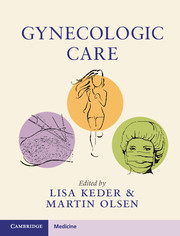Book contents
22 - Urodynamics
from Section 4 - Urogynecology and Pelvic Floor Dysfunction
Published online by Cambridge University Press: 01 February 2018
Summary
Introduction
Urodynamics was first defined by the International Continence Society (ICS) in 1988 to “involve the assessment and function and dysfunction of the urinary tract by any appropriate method” (1). Over the past several decades, urodynamic studies (UDS) have developed to be a collection of clinical tests to evaluate lower urinary tract (LUT) symptoms, function, and dysfunction. The role of UDS has been to identify factors contributing to LUT symptoms and function (whether or not they are manifested), to attempt to predict the outcome of a treatment, and to discern reasons for failure of previous treatments (2,3).
The aim of UDS is to reproduce the patients’ symptoms in order to correlate clinically relevant information. The bladder undergoes two phases: storage and voiding, which are ideally both evaluated through UDS testing with filling and pressure-flow cycles. The function of the LUT is considered to be a product of the forces that are under the influence of – intravesical, abdominal, detrusor, and urethral pressures. These forces and reproduced LUT symptoms are measured by UDS testing which can include simple cystometry, complex cystometry (multichannel UDS with catheters), electromyography of pelvic floor muscles, voiding studies (leak point pressure, uroflowmetry, pressure flow studies, urethral pressure profile), video urodynamics (3).
Scope of the Problem
Urinary incontinence is a widespread problem. In a survey of over 7,000 women, the prevalence of moderate-to-severe urinary incontinence was 17 percent (4). Urinary incontinence affects women of all ages; the prevalence of urinary incontinence increases with age. A survey of nulliparous women demonstrated a higher prevalence of urinary incontinence in the older age group (32 percent; 55–64 years old) compared to the younger age group (24 percent; 25–34 years old) (5). Urinary incontinence has a higher prevalence in patients who report vaginal parity, higher BMI, and vaginal dryness (6). Urinary incontinence is reported to be as high as 51 percent among those being evaluated for noncancerous gynecologic conditions (7). A study evaluating over 10 million women from a US-claimed database determined the overall lifetime risk of receiving surgery for stress urinary incontinence to be 13.6 percent (8). The economic burden of urge urinary incontinence is in billions of dollars (9).
Information
- Type
- Chapter
- Information
- Gynecologic Care , pp. 207 - 223Publisher: Cambridge University PressPrint publication year: 2018
